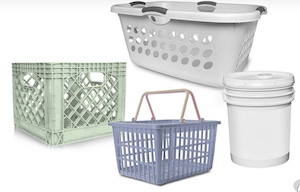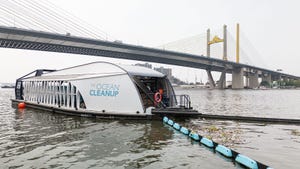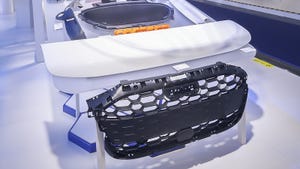Unraveling the economics of plastics recycling
In the headline of a recent article, I wrote, “Recycling is big business, but is it profitable?” According to a piece in the Wall Street Journal, it’s a toss-up. So, I put the question to a technical consultant to the Association of Plastic Recyclers. “The short answer is usually yes,” he said.
May 17, 2018

In the headline of a recent article, I wrote, “Recycling is big business, but is it profitable?” All businesses should be profitable if they are to stay in business, but according to a May 14 article in the Wall Street Journal that I referenced, there are signs that recycling isn’t as profitable as it should be.
|
Examples of high-density polyethylene injection-grade bulky rigids, courtesy Association of Plastic Recyclers. |
I asked Dave Cornell, technical consultant to the Association of Plastic Recyclers (APR; Washington, DC), if he thought recycling is profitable. “The short answer is usually yes,” he said. “To be profitable, the recycling processor must make a product that when sold creates profit that supports the rest of the manufacturing chain.”
The three levels of recycling activity in that chain are collection, sorting and benefaction, Cornell noted. “Collection is often, but not always, a public service as are the public library, trash collection, street cleaning and maintenance, and schools,” which are not expected to generate a positive cash flow or return on investment. “Unlike most government activities, recycling generates a physical product, not just a service,” he said.
Still, cities do receive payment for these services through the “city services” bills, such as the one I get every month that includes water, sewer, trash and recycling pickup, but whether or not these “fees for service” cover the actual costs, I’m not sure. I assume they do. But obviously the city isn’t looking to make a profit.
Sorting, the second step, can be done by a local government or private party or private party under contract to a government entity. “The product of the sorting operation is a bale of used plastic that is sold in the open market for its value,” Cornell explained. “If the sorting is minimal and residual waste is high, the bale price will be low. If the sorting entity reduces contamination, the bale price will be higher.”
Obviously, that is why recyclers want clean recyclate, as that is what has the greater value. Cornell noted, however, that the “buyer/seller relationship centers on a specification for the material with a statement of what is permitted in the bale, what is tolerated at some level, and what is prohibited.”
The benefactors or “reclaimers” (the third step) are private parties. “They buy sorted plastic, usually in bale form, and clean and further sort the materials to generate valuable plastic that can then be made into next-life items,” said Cornell. “Reclaimers do make money. They pay taxes, meet payroll and generate profits; they are not charities and do not receive subsidies. Reclaimers build technologically sophisticated facilities to meet the needs of their customers.”
The Holy Grail for plastic recycling is technology that allows commingling of the various types and grades of plastic to eliminate the labor-intensive and costly “sorting” process. Cornell commented, “Over the years there have been various ideas for taking mixed plastics and recycling those unsorted materials into something of commercial value. Almost always the scenario of recycling mixed plastics together at varying ratios has proven both not useful and not economical.”
So, how clean and free of contamination must the bales be? Cornell said that the APR Model Bale Specifications, available free on the APR website, lists what is to be in the bale, what is limited in the bale and what is prohibited. “Medical waste and rocks, for instance, are universally forbidden by the model specifications,” he said. “For PET bales, there are different grades listed with 6 to 28% non-PET limits. For HDPE bales, the listed grades are limited to 5 to 21% non-HDPE. The ‘not PET’ can be water, aluminum cans or HDPE bottles. The ‘not HDPE’ can be water, aluminum cans or some other plastics. The Grade A bales, 94 or 95% indicated plastic, get the best price and are most sought after. Remember, shipping and sorting or disposing of trash in a bale is not a profit-making activity for the reclaimer. Quality matters.”
Ultimately it’s true that a lot of valuable plastic ends up in landfills. How much plastic goes to the landfill? “Too much,” was Cornell’s short answer. “Sometimes it is because consumers put the recyclable item in the wrong part of the solid waste management system (trash bin rather than the recycle bin). Or the wrong stuff is separated and the trash, called residue, is disposed. Sorters, rather like the economical swine farmer who sells everything but the squeal, work hard to find non-disposal homes for odd items.
“Even so, the residue at sorters can be 5 to 30%. A 30% residue means public education is needed because that amount could put the sorter out of business,” Cornell explained. “Reclaimers also have a residue stream and also try to find homes for that material other than disposal. The reclaimer residue depends on the bale grade and can be more than 5%. Reclaimers are generally successful in finding some home for the other plastics in the bale. How that is done can be the difference between squeaking by and success.”
While there are some plastic items that are not recyclable today, Cornell believes that as benefaction processes are developed and critical mass of supply is achieved, those items will be recycled in the future. “All that takes effort, investment and time,” he said. “Plastics recycling is not a ‘garage operation.’ It involves sophisticated sensing and materials handling, robotics and operation excellence to respond to rapidly changing situations. When opportunities are identified and investment justified, new capabilities will be created and more will be recycled.”
About the Author(s)
You May Also Like





